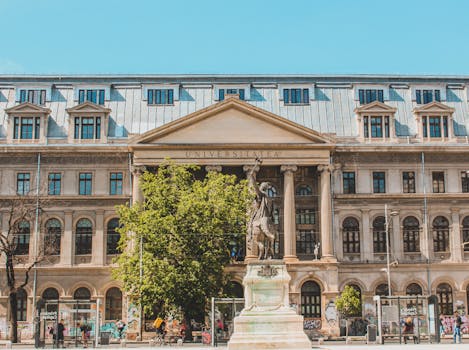
Traveling Through Time: How Europe’s Historical Heritage Shapes Modern Lifestyles in 2025
Traveling Through Time: How Europe’s Historical Heritage Shapes Modern Lifestyles in 2025. Europe, a continent steeped in history and tradition, has a unique ability to blend the old with the new. From the intricate architecture of ancient buildings to the vibrant art scene, Europe’s historical heritage continues to shape modern lifestyles in 2025. In this article, we will delve into the ways in which Europe’s past influences its present, and how this blend of old and new creates a unique cultural experience.
Architecture and City Planning
One of the most visible ways in which Europe’s historical heritage shapes modern lifestyles is through architecture and city planning. Many European cities, such as Rome, Paris, and Barcelona, have preserved their historical centers, with ancient buildings and monuments still standing tall. These structures not only serve as a reminder of the past but also continue to influence the way cities are designed and built today. For example, the narrow streets and alleyways of medieval towns have inspired modern urban planning, with a focus on pedestrian-friendly spaces and mixed-use development.
Art and Culture
Europe’s rich cultural heritage is also evident in its vibrant art scene. From the Renaissance masterpieces of Leonardo da Vinci and Michelangelo to the modern street art of Banksy, Europe has a long history of producing innovative and influential artists. Today, this legacy continues, with many European cities hosting world-class museums, galleries, and festivals. The art of the past has also inspired modern designers, with many fashion and product designers drawing on historical styles and motifs to create unique and contemporary pieces.
Cuisine and Traditions
European cuisine is another area where historical heritage has a significant impact on modern lifestyles. Traditional dishes, such as Italian pasta, Spanish tapas, and French haute cuisine, continue to be popular today, with many modern chefs putting their own twist on classic recipes. The preservation of traditional foodways has also led to a renewed interest in local and sustainable produce, with many Europeans prioritizing seasonal and locally sourced ingredients. Additionally, historical traditions, such as the German Christmas markets and the Italian festa, continue to be celebrated, bringing communities together and providing a sense of continuity with the past.
Conclusion
In conclusion, Europe’s historical heritage continues to shape modern lifestyles in 2025, from architecture and city planning to art and cuisine. By preserving and celebrating its rich cultural legacy, Europe has created a unique blend of old and new, where tradition and innovation coexist. As we look to the future, it is clear that Europe’s historical heritage will remain an essential part of its identity, inspiring new generations of artists, designers, chefs, and city planners.






